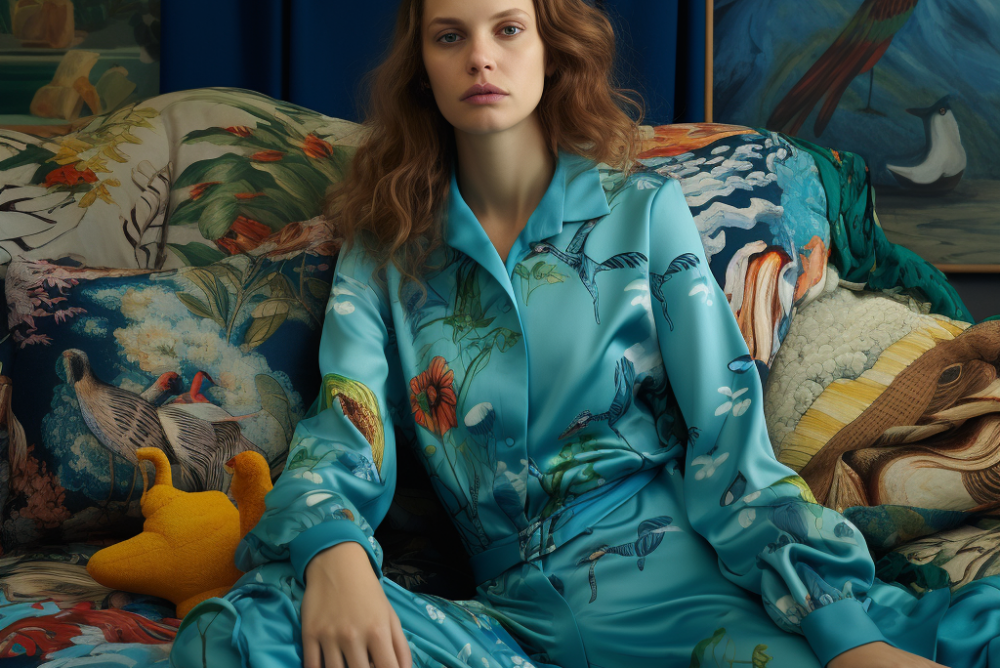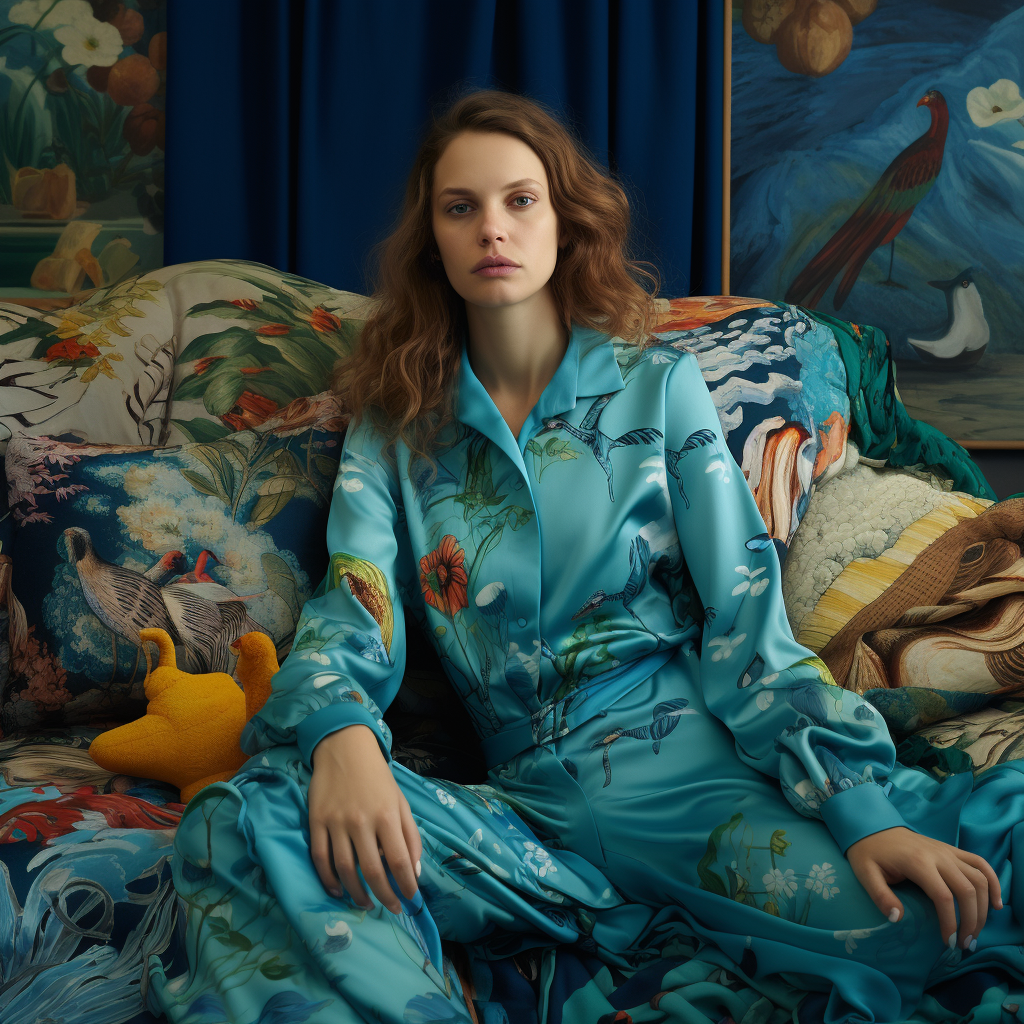Different Loungewear Fabrics: A Guide to the Pros and Cons


Loungewear has become an essential part of many people's wardrobes in recent years. With more people working from home and spending time relaxing at home, demand for comfortable and stylish loungewear has increased. Loungewear comes in a variety of fabrics, each with their own characteristics, advantages and disadvantages. The fabric chosen for loungewear garments can impact the look, feel, durability, and price. Understanding the different loungewear fabrics available can help consumers make informed choices about the type of loungewear that will best suit their needs and preferences. This article explores seven popular fabrics used in loungewear and reviews the pros and cons of each type.
Types of Loungewear Fabrics
Cotton
Cotton is one of the most commonly used fabrics for loungewear. It is a natural fiber derived from the cotton plant. Cotton is valued for its breathability, comfort, and durability. It is a versatile fabric that comes in different weights and weaves ranging from lightweight voiles to heavier jersey knits. Cotton garments tend to get softer with repeated washing. Pure cotton loungewear offers ease of movement and the fabric's ability to absorb moisture makes it perfect for items like t-shirts, shorts, and casual dresses. The downside is that 100% cotton garments wrinkle easily and may shrink when washed in hot water. Cotton-blend fabrics (cotton mixed with polyester or spandex) are popular for minimizing these drawbacks.
Silk
Silk loungewear has a luxurious, sensual feel. Silk is made from the fiber spun by silkworms and is valued for its soft, smooth texture. It is a lightweight, breathable fabric that helps regulate body temperature, making it ideal for pajamas and robes. Silk flows gracefully on the body and resists wrinkles. However, silk garments require delicate laundering as the fabric can easily lose its shape and sheen. Silk loungewear tends to be more expensive than other fabric choices. The delicate nature of silk also means it may not be as durable for everyday wear.
Cashmere
Cashmere is a luxury fiber obtained from cashmere goats. It is exceptionally soft, fine, and lightweight. Cashmere provides excellent insulation, which makes it ideal for sweaters, hoodies, and lounge pants that can be worn as part of a layered loungewear ensemble. Garments made of pure cashmere tend to pill over time, so cashmere blend fabrics are often used. Like silk, cashmere requires more careful laundering and tends to be pricey. Some people may find wool too warm for loungewear intended for year-round use.
Polyester
Polyester is a synthetic fiber made from petroleum byproducts. It is a low-cost, durable fabric that resists shrinking and wrinkling. Polyester or poly-blends like poly-cotton are commonly used for budget-friendly loungewear. Polyester is also blended with other fabrics to create wrinkle-resistant clothes that retain their shape after washing. However, polyester does not breathe as well as natural fibers. Polyester loungewear can feel overly hot for some wearers. Static cling can also be an issue with polyester fabrics.
Viscose
Viscose, also known as rayon, is a semi-synthetic fabric made from wood pulp. It shares some properties with natural fibers like breathability and absorbency. Viscose drapes beautifully and resists wrinkling, making it popular for robes and lounge dresses. It does not cling to the skin like polyester. However, viscose shrinks easily when washed and is prone to snags. It is also weaker when wet. Garments require gentler laundering and fabric softener to avoid damage. Blends like viscose-cotton and viscose-spandex help compensate for these weaknesses.
Spandex
Spandex is a synthetic, stretchy fiber known for its elasticity. It is commonly blended with cotton and other fabrics to create form-fitting loungewear with stretch and recovery. A touch of spandex in t-shirts, leggings, and other garments adds flexibility and comfort through increased range of motion. The downside is that spandex can lose resilience over time. It also provides less breathability than cotton. Spandex blends require gentle washing as harsh detergents can damage the elasticity.
Modal
Modal is a semi-synthetic fabric made from the renewable fiber of beech trees. It has a soft texture and draping quality similar to cotton, silk, or viscose but with enhanced durability and shape retention. Modal is breathable, resists shrinking and fading, and does not cling to the body. It is often used for loungewear like pajama sets, robes, and underwear. While not as luxurious as silk or cashmere, modal requires less delicate care than those fabrics. It can be an affordable alternative for those seeking the look and feel of natural fibers with less maintenance.
Advantages and Disadvantages of Loungewear Fabrics
Cotton
Advantages:
Breathable and comfortable for most wearers
Good absorbency makes it suitable for items worn close to the skin
Versatile fabric comes in varied weights and weaves
Gets softer over time and washes well on gentle cycle
Cotton-blend fabrics reduce shrinking and wrinkling
Disadvantages:
Wrinkles easily compared to synthetic fabrics
Can shrink if washed in hot water
Less luxurious than fabrics like silk or cashmere
Silk
Advantages:
Extremely soft, smooth, lightweight texture
Helps regulate body temperature
Flows gracefully on the body
Resists wrinkles
Luxurious look and feel
Disadvantages:
More expensive than other fabrics
Requires delicate laundering
Can lose shape if washed improperly
Less durable than cotton for daily wear
Dry clean only for some silk items
Cashmere
Advantages:
Exceptionally soft, fine, and lightweight
Provides excellent insulation for cool weather
Luxurious feel and look
Cashmere-blend fabrics help minimize pilling
Disadvantages:
Expensive, pricey fabric
Garments may pill over time
Requires gentle laundering
Can be overly warm for some consumers
Polyester
Advantages:
Inexpensive, budget-friendly fabric
Wrinkle and shrink resistant
Durable and retains shape after washing
Easy to wash and quick drying
Blends like poly-cotton add stretch and reduce wrinkles
Disadvantages:
Does not breathe as well as natural fabrics
Can feel excessively hot for some wearers
Absorbs more odor compared to natural fibers
Static cling can be an issue
Less environmentally friendly than natural fabrics
Viscose
Advantages:
Drapes beautifully and resists wrinkles
More absorbent than synthetic fabrics
Does not cling to skin like polyester
Affordable alternative to silk or cotton
Blends add durability
Disadvantages:
Shrinks easily when washed in hot water
Weaker and prone to snags when wet
Requires more delicate laundering
Blends help compensate for drawbacks
Spandex
Advantages:
Adds stretch and flexibility to fabrics
Allows freedom of movement
Form-fitting for shaping garments
Provides recovery to cling to body shape
Blends create comfort through added range of motion
Disadvantages:
Can lose elasticity over time
Does not breathe as well as natural fabrics
Hand or machine wash gently to avoid damage
Adds clinginess to garments
Modal
Advantages:
Soft, breathable texture
Durable and retains shape well
Resists shrinking and fading
Drapes nicely without clinging
Affordable alternative to pricier fabrics
Easy care compared to delicate fabrics
Disadvantages:
Not as luxurious as silk or cashmere
Prone to pilling like other rayon fabrics
Can lose softness over time
Blends help increase strength and minimize pilling





-500x500.jpg)
-500x500.jpg)
-500x500.jpg)
-500x500.jpg)
-500x500.jpg)